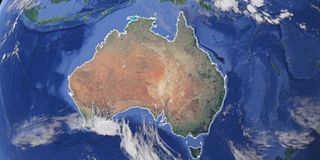Choose your words carefully to communicate

“Australia is the smallest of the seven traditional continents comprising mainland Australia, Tasmania, New Guinea, Seram, possibly Timor, and neighbouring islands…” Is that what the writer had in mind? No.
What you need to know:
- Effective communication is the technique of arranging your words and punctuating them in such a way that they most accurately represent what you have in mind.
Both in writing and in speech, effective communication is the technique of arranging your words and punctuating them in such a way that they most accurately represent what you have in mind.
Take the following statement from the magazine section of last week’s The Standard on Sunday:
“Australia is the smallest of the seven traditional continents comprising mainland Australia, Tasmania, New Guinea, Seram, possibly Timor, and neighbouring islands…”
Is that what the writer had in mind? No. The words are so poorly arranged that the seven continents are what comprise “…mainland Australia, Tasmania, New Guinea, Seram, possibly Timor, and neighbouring islands…”
In short, the whole planet — the seven continents — is made to consist only of “…mainland Australia, Tasmania, New Guinea, Seram, possibly Timor, and neighbouring islands…”
The problem rises from the writer’s failure to insert any punctuation mark between the noun “continents” and the adjectival verb “comprising”.
Therefore, what the writer succeeds in saying is that the earth’s “seven traditional continents” are composed only of Australia and the islands that stud it.
In any case, what are these “seven traditional continents”? No, don’t give me any denotative answer.
'TRADITIONAL'
I am interested only in what semantic value the adjective “traditional” adds to the information that the planet earth has seven continents.
As an adjective, traditional should describe an ethno-national practice or institution or technology or idea — suchlike — which is both time-honoured and, therefore, also, ipso facto, archaic and obsolescent.
The way the writer couches his sentence is, he means to tell us that, from the days of yore — in their customs and beliefs — the tribes and nations of our earth have known that the “seven traditional continents” are composed only of “…mainland Australia, Tasmania, New Guinea, Seram, possibly Timor, and neighbouring islands…”
We learn, then, that Africa, Antarctica, Arctica, Asia, Europe, North America and South America are not parts of our planet’s “seven traditional continents”.
We learn that our planet consists only of “mainland Australia” and the islands immediately around it.
Either that or, although all these colossal land masses have existed since what my Nilotic ancestors called Zep Tepi – “The Creation” — their existence is “untraditional” only — whatever that may mean.
Yet I know only these seven continents. There may be counter-claims here and there. But even India — the most vocal — claims only the sub-continental status.
India’s nationalists seem aware that, if they claimed any more than that, they would be provoking the people of, for instance, Greenland into demanding to be recognised as a continent.
For, if Greenland is only an island, so was India once.
Geologists affirm that there was once only one land mass — called Pangea (Greek for “All-Earth”) — upon the earth’s watery surface. Only later did Pangea disintegrate and, in a process called “continental drift”, separate into the various continents and insular phenomena that bejewel our seas.
It was in the same process that India later hived itself off Africa and rushed north-eastwards to hit Asia with such incredible force as to raise the Himalayas.





